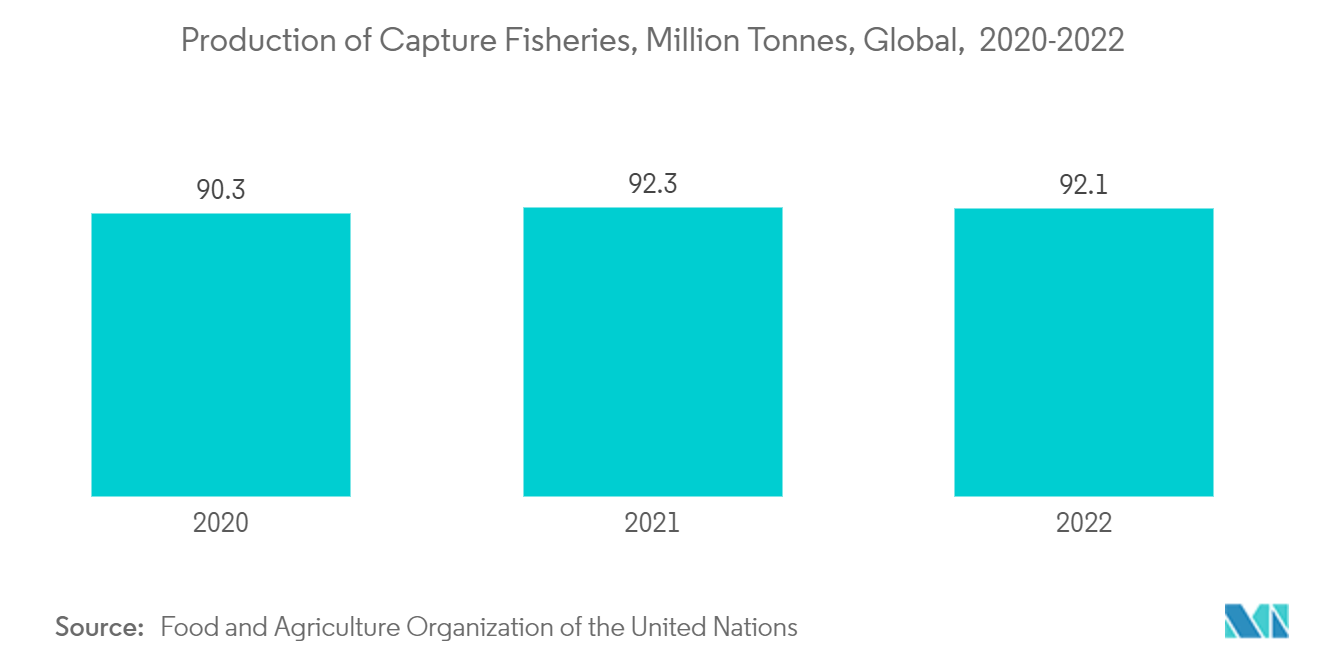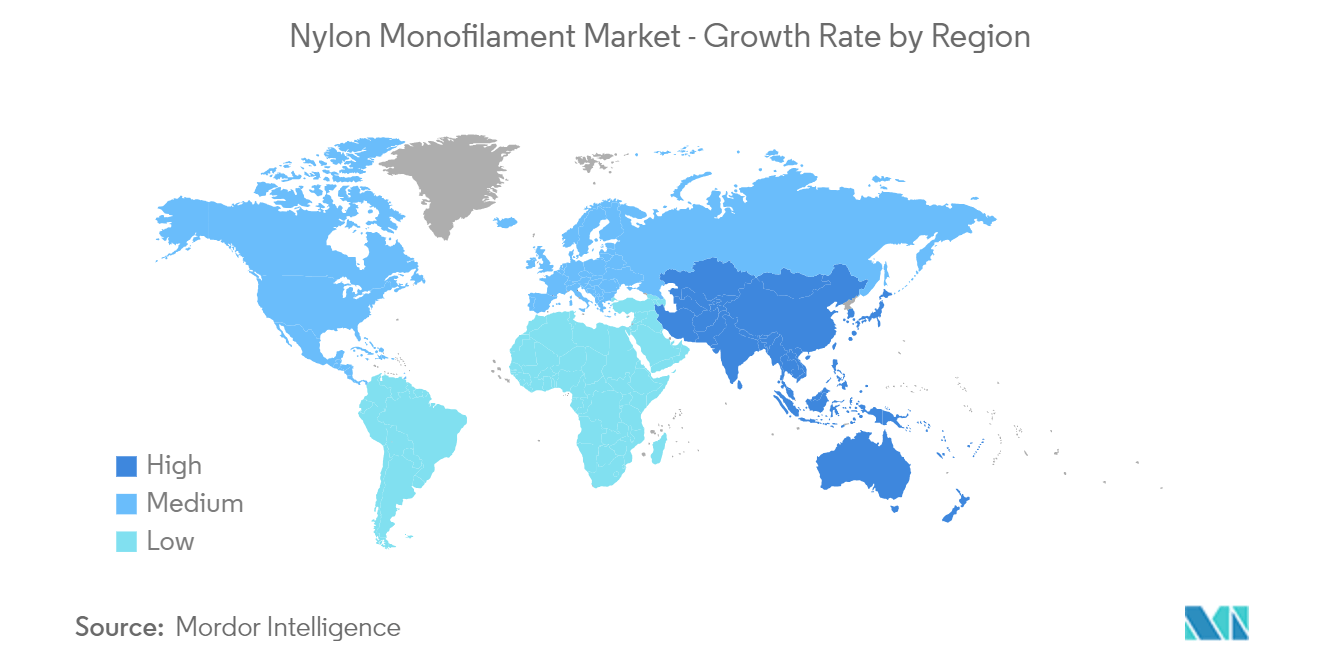Market Trends of Nylon Monofilament Industry
Growing Demand for Nylon Monofilaments from the Fishing Net Segment
- Nylon monofilament is a single, continuous-strand filament of synthetic fiber, and the most commonly recognized monofilament is a nylon fishing line. Nylon monofilaments have higher melting points than polypropylene and are generally extruded at temperatures in the range of 260 °C.
- Nylon monofilament is used to produce a variety of fishing nets owing to its cost-effective and durable properties. Expansion in the fishing industry and increasing demand for fish are likely to boost the demand for nylon monofilament for fishing net applications over the coming years.
- According to the Food and Agriculture Organization of the United Nations, by 2030, the total production of aquatic animals is projected to account for around 202 million metric tons. Moreover, owing to reduced waste and losses and improved resource management, the capture fisheries are projected to grow by 6% from 2020 to 2030 in order to reach 96 million metric tons.
- According to the Biannual Food Outlook of the Food and Agriculture Organization of the United Nations, in 2022, global aquaculture and fisheries production will have increased by 1.2% to 184.1 million metric tons, with capture fisheries decreasing by 0.2% and aquaculture increasing by 2.6%. The global production of capture fisheries was estimated at 92.1 million metric tons in 2022.
- The Aquaculture Magazine stated that, according to the Biannual Food Outlook of the Food and Agriculture Organization of the United Nations, the average per capita consumption of seafood is projected to reach 21.4 kg by 2030, owing to shifting dietary habits, growing urbanization, and a surge in income. The increase in the production and consumption of seafood and capture fisheries is further boosting the demand for fishing nets.
- Hence, the demand for nylon monofilament is increasing in fishing net applications due to the abovementioned factors.

Asia-Pacific Region to Dominate the Market
The Asia-Pacific region is the leader in the global nylon monofilament market. Nylon monofilament's rising demand for fishing nets and its growing applications in the automotive sector in countries like China, Japan, and India are expected to drive the demand for nylon monofilaments in this region.
- Asia-Pacific is one of the leading regions in fish farming. According to the Food and Agriculture Organization of the United Nations, fisheries and aquaculture production in the Asia Pacific is estimated to reach 94 million metric tons by 2030.
- The Indian Brand Equity Foundation stated that India is the third-largest producer of fish and the second-largest aquaculture nation in the world. As per the plan set for FY 2025, fish export is expected to double from USD 5.72 billion to USD 12.28 billion by 2025.
- Nylon monofilament is extensively used in the automotive industry in order to protect wire harnesses and hoses from tearing and offers beneficial properties such as high tensile strength. Superior elasticity and low moisture absorption.
- According to the International Organization of Motor Vehicle Manufacturers (OICA), the total vehicle production volume in China stood at around 27 million units in 2022, which was an increase of nearly 3% in terms of sales compared to 2021. Thus, an increase in vehicle production volume is likely to drive the market for nylon monofilament in the country.
- Owing to the abovementioned factors, the market for nylon monofilament in the Asia-Pacific region is projected to grow significantly during the forecast period.

